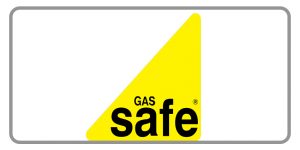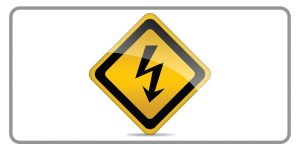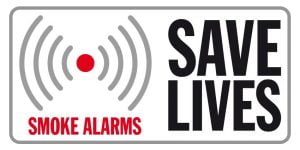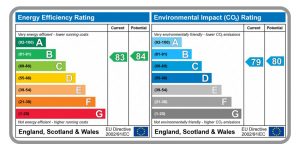 Gas safety
Gas safety
Landlords responsibilities include providing a gas safety certificate at the start of the tenancy and within 28 days of each annual gas safety check, if there is a gas installation. If you do not, you will not be able to evict a tenant using a section 21 notice.
Gas appliances includes any fitted gas appliance, for example
- Gas central heating
- Gas heaters
- Gas hobs
- Gas fires
Under the regulations any appliance that doesn’t pass the required checks will be disconnected. Failure to comply could lead to a fine of up to £5,000 or imprisonment.
 Electrical Safety
Electrical Safety
The Electrical safety Standards in the Private Rented Sector (England) Regulations 2020 were passed by Parliament on 18 March 2020. The regulations apply in England to all new tenancies from 1 July 2020 and all existing tenancies from 1 April 2021.
Private landlords must ensure: electrical safety standards are met when the property is occupied during a tenancy. Every fixed electrical installation at the property must be inspected and tested at least every five years by a qualified person and a certificate must be obtained.
It is also recommended that you regularly carry out portable appliance testing (PAT) on any electrical appliances you provide and supply the tenant with a record of any electrical inspections carried out.
 Smoke and carbon monoxide alarm
Smoke and carbon monoxide alarm
Working smoke alarms must be installed on every storey of living accommodation. The regulations require landlords to ensure alarms are installed in their properties with effect from 1 October 2015. After that the landlord (or someone acting on behalf of the landlord) must ensure all alarms are in working order at the start of each new tenancy.
After the landlord’s test on the first day of the tenancy, tenants should take responsibility for their own safety and test all alarms regularly to ensure they are in working order. If tenants find that their alarm(s) are not in working order during the tenancy, they are advised to arrange the replacement of the batteries or the actual alarm. The regulations do not stipulate what type of alarm should fitted, (hard wired or battery powered) The alarm should be suitable to the individual property.
If you’re the property has any rooms that contain a solid fuel appliance, such as a wood burning stove, working open fire etc., you must also install carbon monoxide alarms in those rooms.
You must carry out a check on the first day of a new tenancy to ensure that smoke and carbon monoxide alarms are in working order and notify your tenant. Failure to comply can lead to a civil penalty of up to £5,000.
 Energy efficiency
Energy efficiency
Landlords responsibilities include providing tenants with an Energy Performance Certificate (EPC) (except some HMOs, for example bedsits or where you let out individual rooms) at the earliest opportunity.
From April 2018, privately rented properties must have a minimum EPC rating of E for new lets and renewals of tenancies (by April 2020 for existing tenancies). Where a property qualifies for an exemption, this must be registered on the National PRS Exemptions Register.
An EPC is prepared by a Domestic Assesor who visits the property and prepares a detailed report which covers elements such as glazing, insulation and heating.
If upgrades are necessary for a property to meet the minimum EPC rating, a landlord must contribute their own funding where third party funding is not available, up to a cost cap of £3,500.
Furniture
Landlords responsibilities are to ensure that any furniture supplied has the required safety labels and fireproofing.
 Legionella Safety
Legionella Safety
What is Legionella? Landlords responsibilities
Legionnaires’ disease is a potentially fatal form of pneumonia caused by the inhalation of small droplets of contaminated water containing Legionella. All man-made hot and cold water systems are likely to provide an environment where Legionella can grow. Where conditions are favourable (ie suitable growth temperature range; water droplets (aerosols) produced and dispersed; water stored and/or recirculated; some ‘food’ for the organism to grow such as rust, sludge, scale, biofilm etc) then the bacteria may multiply thus increasing the risk of exposure. It is a simple fact that the organism will colonise both large and small systems so both require risks to be managed effectively.
The law is clear that if you are a landlord and rent out your property (or even a room within your own home) then you have legal Landlords responsibilities to ensure the health and safety of your tenant by keeping the property safe and free from health hazards.
What you must do
The practical and proportionate application of health and safety law to landlords of domestic rental properties is that whilst there is a duty to assess the risk from exposure to Legionella to ensure the safety of their tenants, this does not require an in-depth, detailed assessment. The risks from hot and cold water systems in most residential settings are generally considered to be low owing to regular water usage and turnover. A typical ‘low risk’ example may be found in a small building (eg housing unit) with small domestic-type water systems, where daily water usage is inevitable and sufficient to turn over the entire system; where cold water is directly from a wholesome mains supply (no stored water tanks); where hot water is fed from instantaneous heaters or low volume water heaters (supplying outlets at 50 °C); and where the only outlets are toilets and wash hand basins.
A simple assessment may show that there are no real risks and are being properly managed and no further action is needed. It is important to review the assessment in case anything changes in the system.
Implementing simple, proportionate and appropriate control measures will ensure the risk remains low. For most domestic hot and cold water systems, temperature is the most reliable way of ensuring the risk of exposure to Legionella bacteria is minimised ie keep the hot water hot, cold water cold and keep it moving. Other simple control measures to help control the risk of exposure to Legionella include:
- flushing out the system prior to letting the property
- avoiding debris getting into the system (eg ensure the cold water tanks, where fitted, have a tight fitting lid)
- setting control parameters (eg setting the temperature of the hot water cylinder (calorifier) to ensure water is stored at 60°C)
- make sure any redundant pipework identified is removed.
The risk is further lowered where instantaneous water heaters (for example combi boilers and electric showers) are installed because there is no water storage.

 Gas safety
Gas safety Electrical Safety
Electrical Safety Smoke and carbon monoxide alarm
Smoke and carbon monoxide alarm Energy efficiency
Energy efficiency
 Legionella Safety
Legionella Safety


